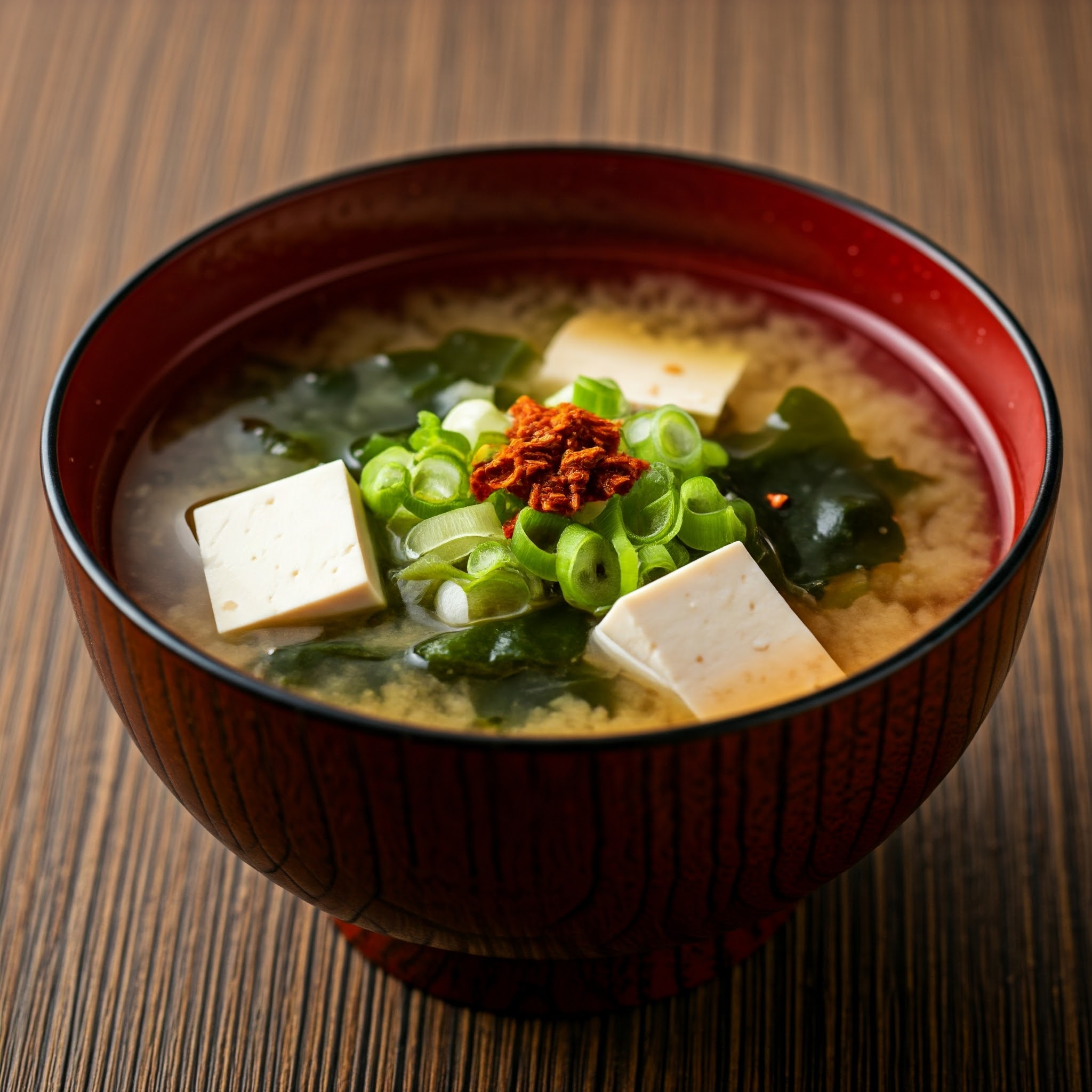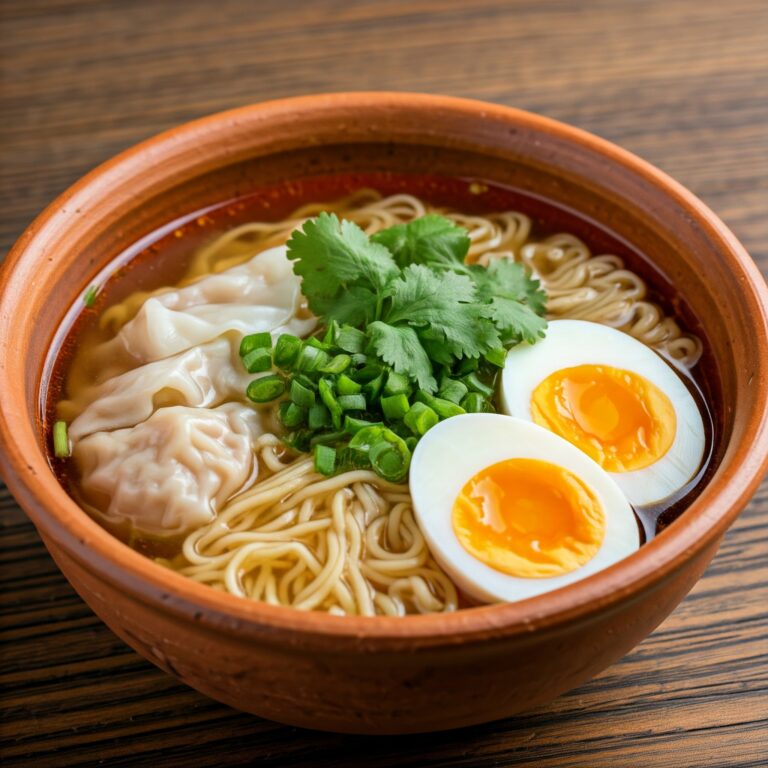The Ultimate Miso Soup Recipe: Warm and Comforting Japanese Delight

Miso soup is a staple in Japanese cuisine celebrated for its comforting warmth rich flavors and health benefits. Whether you’re looking for a light appetizer or a quick meal this miso soup recipe is both simple and delicious. Follow this guide to create the perfect bowl of miso soup in just minutes.

Ingredients You’ll Need
Here’s what you’ll need to make authentic miso soup:
Base Ingredients:
- 4 cups of dashi broth (traditional Japanese stock; see Pro Tip below for substitutes)
- 3 tablespoons miso paste (white yellow or red depending on your flavor preference)
Optional Add-ins:
- 1/2 cup cubed tofu (soft or firm)
- 1/4 cup sliced green onions
- 1/4 cup wakame seaweed (rehydrated)
- Mushrooms (shiitake or enoki are great choices)
- Daikon radish or carrots (thinly sliced for added texture)
Step-by-Step Instructions
Step 1: Prepare the Dashi Broth
- Heat 4 cups of dashi broth in a medium-sized saucepan over medium heat.
- Bring it to a gentle simmer but avoid boiling as this can affect the flavor.
Pro Tip: Don’t have dashi? Substitute with chicken stock vegetable stock or even plain water for a milder version. However dashi is highly recommended for authentic taste.
Step 2: Add Optional Ingredients
- If using tofu cut it into small cubes and gently add it to the broth.
- Stir in rehydrated wakame mushrooms or any other add-ins you prefer. Let simmer for 2-3 minutes.
Pro Tip: Soak wakame seaweed in water for 5 minutes before adding it to the soup. This prevents it from clumping and ensures even cooking.
Step 3: Incorporate the Miso Paste
- Turn the heat to low to prevent boiling.
- Use a ladle to scoop some hot dashi into a small bowl. Dissolve the 3 tablespoons of miso paste in the hot liquid using a spoon or small whisk.
- Pour the dissolved miso back into the pot and gently stir.
Pro Tip: Never boil the miso paste as it can destroy its delicate flavors and beneficial probiotics.
Step 4: Garnish and Serve
- Ladle the soup into bowls and sprinkle with sliced green onions. Serve immediately.
Choosing the Right Miso Paste
- White miso (shiro miso): Mild and slightly sweet. Perfect for beginners or a lighter soup.
- Yellow miso (shinshu miso): Balanced flavor slightly stronger than white miso.
- Red miso (aka miso): Bold and salty. Best for robust hearty miso soups.
Pro Tip: Experiment with mixing miso pastes to create a flavor that suits your taste!
Health Benefits of Miso Soup
Miso soup isn’t just tasty—it’s packed with health benefits:
- Rich in probiotics: Thanks to the fermented miso paste it promotes gut health.
- Low in calories: A light yet filling option for weight management.
- Nutrient-dense: Contains vitamins minerals and antioxidants from ingredients like seaweed and tofu.
Common Mistakes to Avoid
- Boiling the miso paste: This can ruin the flavor and eliminate probiotics.
- Skipping dashi broth: While substitutes work dashi gives the soup its unique umami essence.
- Adding too much miso paste: Start with less as it can easily overpower the dish.
Variations to Try
- Spicy Miso Soup: Add a dash of chili oil or sliced red chili for some heat.
- Vegetarian Miso Soup: Use vegetable dashi and load up on seasonal veggies.
- Seafood Miso Soup: Add shrimp clams or fish for a luxurious twist.
Final Thoughts
Making miso soup at home is quick easy and deeply satisfying. With just a handful of ingredients you can whip up a comforting bowl bursting with flavor and nutrients. Give it a try and soon it will become a regular on your meal rotation!






